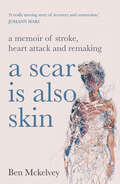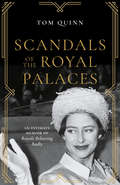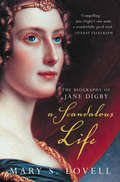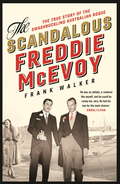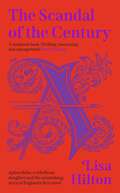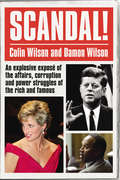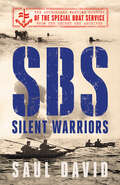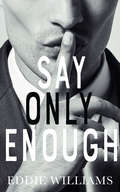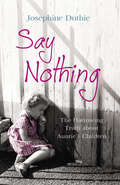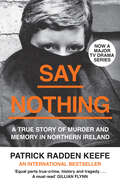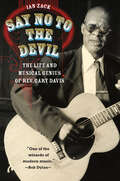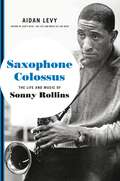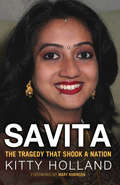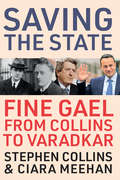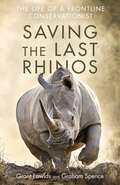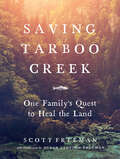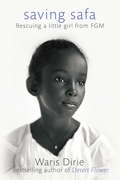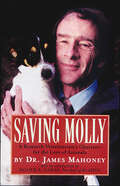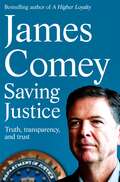- Table View
- List View
A Scar is Also Skin: A memoir of stroke, heart attack and remaking
by Ben MckelveyFor the first twenty-seven years of his life, Ben McKelvey didn't spend too much time thinking about his brain, nor much about trauma. He was fit, carefree and happy working as a magazine journalist, writing listicles and doing celebrity junket interviews.Then one day, while boxing, he suffered a stroke. In the time it took for a left hook to be thrown, Ben disconnected from language and therefore the world. He wanted nothing more than to go back to normal life and, after a time, it looked he had. He spoke again in a few days, read in a few weeks and then, in months, returned to his listicles and junkets. Only normal life no longer felt normal. Ben's brain had changed, and so had he.Ben's stroke was followed a few years later by a startling heart attack. A crisis followed, and surgeries: dangerous, painful and scarring. On an unsteady path of recovery, Ben started to question everything about his life. He wondered what makes us who we are, and what role family, fate and physiology plays. He wondered what a good life looks like.While still weak, thin and questioning, a letter arrived from the Australian Defence Force. It was an invitation to embed with Australian forces in Iraq, and also an invitation to a new career and a calling, one that would allow Ben to ask deep questions about life, connection and the morality of people who have also visited the precarious edge of human experience. Combining autobiography, reportage and science, Ben Mckelvey tells his personal story, along with research about psychology, physiology and neuropathology. He shares intimate stories about people who have dealt with illness or trauma and some who are moulding our understanding of ourselves. In the telling, Ben investigates trauma, change and resilience. This is a powerful book for anyone who has ever been broken, and hoped to find themselves remade.
Scandals of the Royal Palaces: An Intimate Memoir of Royals Behaving Badly
by Tom QuinnGeorge Orwell once said that the British love a really good murder. He might also have said that the only thing the British love more than a good murder is a really good scandal, and best of all are the political and sexual scandals that take place in Britain’s royal palaces.Dozens of royal scandals have been covered up or suppressed to some degree by an establishment that is famous for its determination to keep royal secrets, well, secret. This book is the first in-depth look at the outrageous behaviour not just of the royals themselves but also of palace officials, courtiers, household servants and hangers-on.Covering existing royal palaces in some depth as well as taking a look at scandals linked to long-vanished royal residences, such as Whitehall, Nonsuch and Kings Langley, Scandals of the Royal Palaces also includes new information on well-known and not-so-well-known scandals, including those that have only recently been revealed in detail through the release of previously secret official papers.As this glorious romp of a book reveals, scandal and the royal family have always been bedfellows, and the key to the sometimes extraordinary scandals the royal family have become involved in are the palaces in which they live.
A Scandalous Life: The Biography Of Jane Digby (text Only)
by Mary S. LovellThe biography of Jane Digby, an ‘enthralling tale of a nineteenth-century beauty whose heart – and hormones – ruled her head.’ Harpers and Queen
The Scandalous Freddie McEvoy: The true story of the swashbuckling Australian rogue
by Frank WalkerSwashbuckler, daredevil racing-car champion, Winter Olympian, gambler, smuggler, scoundrel, stud and suspected Nazi agent who died a mysterious death - this is the fascinating story of the scandalous Freddie McEvoy.Born in Melbourne in 1907, Freddie's life took him from socialising with a young Errol Flynn in Sydney and on to the French Riviera in the heady years leading up to World War II. With his dashing good looks and charm, Freddie lived a swashbuckling life, quickly figuring out his path to easy fortune was through lonely rich women. World War II didn't stop Freddie's hedonistic pursuits - he skipped enlistment for Australia and Britain to party on in Hollywood, where he renewed his friendship with the now infamous Errol Flynn. Always short of cash, Freddie smuggled guns and diamonds on his yacht between California and Mexico and was rumoured to have worked as a spy. It was a life lived large and Freddie's death in 1951 was under the most mysterious circumstances off the coast of Morocco: his body was found naked and scalped . . .Frank Walker, bestselling author of The Tiger Man of Vietnam and Maralinga, has for the first time uncovered the complete, outrageous and incredible true story of Freddie McEvoy, Australia's daredevil lothario.'Freddie was one of the great livers of life. He lived it the way he saw it - he didn't give a hoot.'Errol Flynn'Pleasure is my business.' Freddie McEvoy'an extraordinary yarn . . . finely researched' Sun-Herald on Frank Walker's Ghost Platoon
Scandalous
by Laura DLaura is a bright and ambitious language student at a top university in France. She is also broke. Surfing the internet one evening, she stumbles across an adult website that might just hold the answer to her financial problems - pages of personal ads offering money in exchange for 'female company'. On impulse she responds to one of them . . . and then another and another. When a man called Joe contacts her, prepared to pay €150 for an hour-long meeting, she nervously agrees to his request.Joe will be the first of many clients - men of all ages with urgent needs. And Laura will surprise even herself as she submits to their often bizarre demands in hotel rooms and apartments. But the pressures of leading a double life as student and call girl, and the increasing possessiveness of Joe soon begin to take their toll. In her first year at university, 19-year-old Laura is set to learn more about men, money, sex and herself than she could ever have imagined.
The Scandal of the Century: A thrilling historical biography about the astonishing story of England’s first novel
by Lisa Hilton‘A sweeping, scintillatingly original, exciting exploration of writer, spy, power player, lover Aphra Behn’ Kate Williams, historian and author of Rival Queens: The Betrayal of Mary, Queen of Scots----A CLANDESTINE AFFAIR ‘Whereas the Lady Henrietta Berkeley has been absent from her Father's house since the 20th August last past… AN OUTRAGEOUS ELOPEMENT … and is not yet known where she is, nor whether she is alive or dead. STOLEN LETTERS, SCHEMING SERVANTS These are to give notice That whoever shall find her, so that she may be brought back to her Father, the Earl of Berkeley, they shall have 200 Pounds Reward’ SEX. SENSATION. CELEBRITY. This is The Scandal of the Century - and the true story of the author Aphra Behn, who used a shocking love affair to create the first English novel . . . ----In 1682, a young woman in the throes of a passionate affair flees her parents’ home in Surrey to seek a new life in London. A scandal in its own right, but this is no ordinary young woman: Lady Henrietta Berkeley is the daughter of one of England’s most powerful men, and her lover is her own sister’s husband. As news of this notorious adulteress spreads, her flight, capture and the lawsuit that follow tear through society as the scandal of the century.To Aphra Behn, England's first professional female writer – herself condemned as a scarlet woman of loose morals – Henrietta’s trial would be more than a source of shock and intrigue: it would inspire her to write Love Letters Between a Nobleman and His Sister, an outrageous and bestselling political fiction and arguably the first novel in English literature.Aphra herself is an enigma, the facts about her life continually disputed. By revealing the story of these two rebellious and ruthless women, Lisa Hilton's new history offers a surprisingly original theory on the origins of one of England's most celebrated playwrights. Against the backdrop of seventeenth-century England, with its strict traditional conventions of love, duty and identity, The Scandal of the Century shows just how far both women will go to break free.
Scandal!: An Explosive Exposé of the Affairs, Corruption and Power Struggles of the Rich and Famous (World Famous Ser.)
by Colin Wilson Damon WilsonWhat makes a good scandal? Money, politics and power, and a huge dose of media interest. Scandal reigns in the world of politics, celebrity, business, religion, royalty and art, and this book covers it all - from Watergate to Michael Jackson, Diana to Oscar Wilde. Distinguished writer Colin Wilson delves into the murky intrigues of British and American life to bring the most scandalous secrets to light.Containing brand new chapters on Michael Jackson, ENRON, the death of David Kelly, the Catholic Church sex scandals and the cash-for-honours scandal, and an updated chapter on OJ Simpson, here are the embarrassing true stories the rich and famous tried but failed to hide.
SBS – Silent Warriors: The Authorised Wartime History
by Saul David‘It is incredibly refreshing to read of these fabulously daring missions … This is a terrific book, written with all the gusto, thrills and heady excitement these SBS operations richly deserve. It really is one of the most enjoyable histories I’ve read in many a year’ James Holland, Daily Telegraph, five stars
Say Only Enough
by Eddie WilliamsOn finding myself redundant at the ripe old age of thirty-seven and, therefore, in need of new employment, an alternative opportunity presented itself, to form a company and start my own business. I had no managerial experience, no previous ambition to form my own company or be my own boss, no entrepreneurial inclinations and no money. With help from a friend, a company was formed. From the combined elements of endurance, resilience, determination, steadfastness, vision, luck, humour and sleepless nights, a very successful company developed. It is now one of the market leaders in its specialist field, and celebrated its 40th anniversary this year. This is not a book offering advice on how to build a successful business. It is more a light-hearted romp and adventure in doing so. It is one that traces the route via an undulating winding road with hazardous bends and obstructions. The journey provides unfolding opportunities to view the distant horizon, where awaits the lush green valley of the final destination.
Say Nothing: The Harrowing Truth About Auntie's Children
by Josephine DuthieSay Nothing is the moving true story of four neglected siblings who were taken into care following the breakdown of their parents' marriage. Sent to a small croft in the north-east of Scotland, they endured an onslaught of physical and mental abuse at the hands of an elderly, inexperienced foster mother. For ten years the children's cries for help were ignored and misunderstood in the naive social-work climate of the late 1950s, and this heartbreaking personal account of cruelty and neglect reveals the effect this maltreatment had on their ability to adjust to a normal adult life.Say Nothing was written as a voice of support for all abused children who are afraid or were never given the chance to tell their story.
Say Nothing: A True Story Of Murder and Memory In Northern Ireland
by null Patrick Radden KeefeTHE INTERNATIONAL BESTSELLER WINNER OF THE ORWELL PRIZE FOR POLITICAL WRITING ONE OF DUA LIPA'S BEST BOOKS OF THE YEAR ‘The best book I’ve read for a while, it’s fantastic’ John Oliver ‘A must read’ Gillian Flynn One night in December 1972, Jean McConville, a mother of ten, was abducted from her home in Belfast and never seen alive again. Her disappearance would haunt her orphaned children, the perpetrators of this terrible crime and a whole society in Northern Ireland for decades. In this powerful, scrupulously reported book, Patrick Radden Keefe offers not just a forensic account of a brutal crime but a vivid portrait of the world in which it happened. The tragedy of an entire country is captured in the spellbinding narrative of a handful of characters, presented in lyrical and unforgettable detail. A poem by Seamus Heaney inspires the title: ‘Whatever You Say, Say Nothing’. By defying the culture of silence, Keefe illuminates how a close-knit society fractured; how people chose sides in a conflict and turned to violence; and how, when the shooting stopped, some ex-combatants came to look back in horror at the atrocities they had committed, while others continue to advocate violence even today. Say Nothing deftly weaves the stories of Jean McConville and her family with those of Dolours Price, the first woman to join the IRA as a front-line soldier, who bombed the Old Bailey when barely out of her teens; Gerry Adams, who helped bring an end to the fighting, but denied his own IRA past; Brendan Hughes, a fearsome IRA commander who turned on Adams after the peace process and broke the IRA’s code of silence; and other indelible figures. By capturing the intrigue, the drama and the profound human cost of the Troubles, the book presents a searing chronicle of the lengths that people are willing to go to in pursuit of a political ideal, and the ways in which societies mend – or don’t – in the aftermath of a long and bloody conflict.
Say No to the Devil: The Life and Musical Genius of Rev. Gary Davis
by Ian ZackWho was the greatest of all American guitarists? You probably didn’t name Gary Davis, but many of his musical contemporaries considered him without peer. Bob Dylan called Davis “one of the wizards of modern music.” Bob Weir of the Grateful Dead—who took lessons with Davis—claimed his musical ability “transcended any common notion of a bluesman.” And the folklorist Alan Lomax called him “one of the really great geniuses of American instrumental music.” But you won’t find Davis alongside blues legends Robert Johnson and Muddy Waters in the Rock and Roll Hall of Fame. Despite almost universal renown among his contemporaries, Davis lives today not so much in his own work but through covers of his songs by Dylan, Jackson Browne, and many others, as well as in the untold number of students whose lives he influenced. The first biography of Davis, Say No to the Devil restores “the Rev’s” remarkable story. Drawing on extensive research and interviews with many of Davis’s former students, Ian Zack takes readers through Davis’s difficult beginning as the blind son of sharecroppers in the Jim Crow South to his decision to become an ordained Baptist minister and his move to New York in the early 1940s, where he scraped out a living singing and preaching on street corners and in storefront churches in Harlem. There, he gained entry into a circle of musicians that included, among many others, Lead Belly, Woody Guthrie, and Dave Van Ronk. But in spite of his tremendous musical achievements, Davis never gained broad recognition from an American public that wasn’t sure what to make of his trademark blend of gospel, ragtime, street preaching, and the blues. His personal life was also fraught, troubled by struggles with alcohol, women, and deteriorating health. Zack chronicles this remarkable figure in American music, helping us to understand how he taught and influenced a generation of musicians.
Say No to the Devil: The Life and Musical Genius of Rev. Gary Davis
by Ian ZackWho was the greatest of all American guitarists? You probably didn’t name Gary Davis, but many of his musical contemporaries considered him without peer. Bob Dylan called Davis “one of the wizards of modern music.” Bob Weir of the Grateful Dead—who took lessons with Davis—claimed his musical ability “transcended any common notion of a bluesman.” And the folklorist Alan Lomax called him “one of the really great geniuses of American instrumental music.” But you won’t find Davis alongside blues legends Robert Johnson and Muddy Waters in the Rock and Roll Hall of Fame. Despite almost universal renown among his contemporaries, Davis lives today not so much in his own work but through covers of his songs by Dylan, Jackson Browne, and many others, as well as in the untold number of students whose lives he influenced. The first biography of Davis, Say No to the Devil restores “the Rev’s” remarkable story. Drawing on extensive research and interviews with many of Davis’s former students, Ian Zack takes readers through Davis’s difficult beginning as the blind son of sharecroppers in the Jim Crow South to his decision to become an ordained Baptist minister and his move to New York in the early 1940s, where he scraped out a living singing and preaching on street corners and in storefront churches in Harlem. There, he gained entry into a circle of musicians that included, among many others, Lead Belly, Woody Guthrie, and Dave Van Ronk. But in spite of his tremendous musical achievements, Davis never gained broad recognition from an American public that wasn’t sure what to make of his trademark blend of gospel, ragtime, street preaching, and the blues. His personal life was also fraught, troubled by struggles with alcohol, women, and deteriorating health. Zack chronicles this remarkable figure in American music, helping us to understand how he taught and influenced a generation of musicians.
Say No to the Devil: The Life and Musical Genius of Rev. Gary Davis
by Ian ZackWho was the greatest of all American guitarists? You probably didn’t name Gary Davis, but many of his musical contemporaries considered him without peer. Bob Dylan called Davis “one of the wizards of modern music.” Bob Weir of the Grateful Dead—who took lessons with Davis—claimed his musical ability “transcended any common notion of a bluesman.” And the folklorist Alan Lomax called him “one of the really great geniuses of American instrumental music.” But you won’t find Davis alongside blues legends Robert Johnson and Muddy Waters in the Rock and Roll Hall of Fame. Despite almost universal renown among his contemporaries, Davis lives today not so much in his own work but through covers of his songs by Dylan, Jackson Browne, and many others, as well as in the untold number of students whose lives he influenced. The first biography of Davis, Say No to the Devil restores “the Rev’s” remarkable story. Drawing on extensive research and interviews with many of Davis’s former students, Ian Zack takes readers through Davis’s difficult beginning as the blind son of sharecroppers in the Jim Crow South to his decision to become an ordained Baptist minister and his move to New York in the early 1940s, where he scraped out a living singing and preaching on street corners and in storefront churches in Harlem. There, he gained entry into a circle of musicians that included, among many others, Lead Belly, Woody Guthrie, and Dave Van Ronk. But in spite of his tremendous musical achievements, Davis never gained broad recognition from an American public that wasn’t sure what to make of his trademark blend of gospel, ragtime, street preaching, and the blues. His personal life was also fraught, troubled by struggles with alcohol, women, and deteriorating health. Zack chronicles this remarkable figure in American music, helping us to understand how he taught and influenced a generation of musicians.
Say No to the Devil: The Life and Musical Genius of Rev. Gary Davis
by Ian ZackWho was the greatest of all American guitarists? You probably didn’t name Gary Davis, but many of his musical contemporaries considered him without peer. Bob Dylan called Davis “one of the wizards of modern music.” Bob Weir of the Grateful Dead—who took lessons with Davis—claimed his musical ability “transcended any common notion of a bluesman.” And the folklorist Alan Lomax called him “one of the really great geniuses of American instrumental music.” But you won’t find Davis alongside blues legends Robert Johnson and Muddy Waters in the Rock and Roll Hall of Fame. Despite almost universal renown among his contemporaries, Davis lives today not so much in his own work but through covers of his songs by Dylan, Jackson Browne, and many others, as well as in the untold number of students whose lives he influenced. The first biography of Davis, Say No to the Devil restores “the Rev’s” remarkable story. Drawing on extensive research and interviews with many of Davis’s former students, Ian Zack takes readers through Davis’s difficult beginning as the blind son of sharecroppers in the Jim Crow South to his decision to become an ordained Baptist minister and his move to New York in the early 1940s, where he scraped out a living singing and preaching on street corners and in storefront churches in Harlem. There, he gained entry into a circle of musicians that included, among many others, Lead Belly, Woody Guthrie, and Dave Van Ronk. But in spite of his tremendous musical achievements, Davis never gained broad recognition from an American public that wasn’t sure what to make of his trademark blend of gospel, ragtime, street preaching, and the blues. His personal life was also fraught, troubled by struggles with alcohol, women, and deteriorating health. Zack chronicles this remarkable figure in American music, helping us to understand how he taught and influenced a generation of musicians.
Say No to the Devil: The Life and Musical Genius of Rev. Gary Davis
by Ian ZackWho was the greatest of all American guitarists? You probably didn’t name Gary Davis, but many of his musical contemporaries considered him without peer. Bob Dylan called Davis “one of the wizards of modern music.” Bob Weir of the Grateful Dead—who took lessons with Davis—claimed his musical ability “transcended any common notion of a bluesman.” And the folklorist Alan Lomax called him “one of the really great geniuses of American instrumental music.” But you won’t find Davis alongside blues legends Robert Johnson and Muddy Waters in the Rock and Roll Hall of Fame. Despite almost universal renown among his contemporaries, Davis lives today not so much in his own work but through covers of his songs by Dylan, Jackson Browne, and many others, as well as in the untold number of students whose lives he influenced. The first biography of Davis, Say No to the Devil restores “the Rev’s” remarkable story. Drawing on extensive research and interviews with many of Davis’s former students, Ian Zack takes readers through Davis’s difficult beginning as the blind son of sharecroppers in the Jim Crow South to his decision to become an ordained Baptist minister and his move to New York in the early 1940s, where he scraped out a living singing and preaching on street corners and in storefront churches in Harlem. There, he gained entry into a circle of musicians that included, among many others, Lead Belly, Woody Guthrie, and Dave Van Ronk. But in spite of his tremendous musical achievements, Davis never gained broad recognition from an American public that wasn’t sure what to make of his trademark blend of gospel, ragtime, street preaching, and the blues. His personal life was also fraught, troubled by struggles with alcohol, women, and deteriorating health. Zack chronicles this remarkable figure in American music, helping us to understand how he taught and influenced a generation of musicians.
Say No to the Devil: The Life and Musical Genius of Rev. Gary Davis
by Ian ZackWho was the greatest of all American guitarists? You probably didn’t name Gary Davis, but many of his musical contemporaries considered him without peer. Bob Dylan called Davis “one of the wizards of modern music.” Bob Weir of the Grateful Dead—who took lessons with Davis—claimed his musical ability “transcended any common notion of a bluesman.” And the folklorist Alan Lomax called him “one of the really great geniuses of American instrumental music.” But you won’t find Davis alongside blues legends Robert Johnson and Muddy Waters in the Rock and Roll Hall of Fame. Despite almost universal renown among his contemporaries, Davis lives today not so much in his own work but through covers of his songs by Dylan, Jackson Browne, and many others, as well as in the untold number of students whose lives he influenced. The first biography of Davis, Say No to the Devil restores “the Rev’s” remarkable story. Drawing on extensive research and interviews with many of Davis’s former students, Ian Zack takes readers through Davis’s difficult beginning as the blind son of sharecroppers in the Jim Crow South to his decision to become an ordained Baptist minister and his move to New York in the early 1940s, where he scraped out a living singing and preaching on street corners and in storefront churches in Harlem. There, he gained entry into a circle of musicians that included, among many others, Lead Belly, Woody Guthrie, and Dave Van Ronk. But in spite of his tremendous musical achievements, Davis never gained broad recognition from an American public that wasn’t sure what to make of his trademark blend of gospel, ragtime, street preaching, and the blues. His personal life was also fraught, troubled by struggles with alcohol, women, and deteriorating health. Zack chronicles this remarkable figure in American music, helping us to understand how he taught and influenced a generation of musicians.
Saxophone Colossus: The Life and Music of Sonny Rollins
by Aidan Levy**Winner of the American Book Award (2023)** **Longlisted for the PEN/Jacqueline Bograd Weld Award (2023)** The long-awaited first full biography of legendary jazz saxophonist and composer Sonny Rollins Sonny Rollins has long been considered an enigma. Known as the &“Saxophone Colossus,&” he is widely acknowledged as one of the greatest jazz improvisers of all time, winning Grammys, the Austrian Cross of Honor, Sweden&’s Polar Music Prize and a National Medal of Arts. A bridge from bebop to the avant-garde, he is a lasting link to the golden age of jazz, pictured in the iconic &“Great Day in Harlem&” portrait. His seven-decade career has been well documented, but the backstage life of the man once called &“the only jazz recluse&” has gone largely untold—until now. Based on more than 200 interviews with Rollins himself, family members, friends, and collaborators, as well as Rollins&’ extensive personal archive, Saxophone Colossus is the comprehensive portrait of this legendary saxophonist and composer, civil rights activist and environmentalist. A child of the Harlem Renaissance, Rollins&’ precocious talent landed him on the bandstand and in the recording studio with Bud Powell, Thelonious Monk, Charlie Parker, Miles Davis and Dizzy Gillespie, or playing opposite Billie Holiday. An icon in his own right, he recorded Tenor Madness, featuring John Coltrane; Way Out West; Freedom Suite, the first civil rights-themed album of the hard bop era; A Night at the Village Vanguard; and the 1956 classic Saxophone Colossus. Yet his meteoric rise to fame was not without its challenges. He served two sentences on Rikers Island and won his battle with heroin addiction. In 1959, Rollins took a two-year sabbatical from recording and performing, practicing up to 16 hours a day on the Williamsburg Bridge. In 1968, he left again to study at an ashram in India. He returned to performing from 1971 until his retirement in 2012. The story of Sonny Rollins—innovative, unpredictable, larger than life—is the story of jazz itself, and Sonny&’s own narrative is as timeless and timely as the art form he represents. Part jazz oral history told in the musicians&’ own words, part chronicle of one man&’s quest for social justice and spiritual enlightenment, this is the definitive biography of one of the most enduring and influential artists in jazz and American history.
Savita: The Tragedy That Shook A Nation
by Kitty HollandSeventeen weeks pregnant and facing a miscarriage, Savita Halappanavar and her husband Praveen walked into an Irish maternity ward in October 2012. Unwittingly, the couple also walked into that deeply controversial arena in which Ireland’s legislative position on abortion remained unresolved.A week later, Savita was dead from septicaemia. Reports of her death and of the refusal to allow Savita a termination of her pregnancy sent shockwaves across Ireland and around the world. Once again the subject of abortion was catapulted to the very top of the agenda in Ireland. With the pro-life and pro-choice camps claiming the moral high ground, both sides in the bitterly contested battle sought to appropriate Savita’s story and her image. In the midst of the ensuing rage and furore, the marches and protests, the threats and counter-threats that exploded across political and media platforms, Savita and the complete circumstances of her death were lost. In Savita: The Tragedy That Shook A Nation, Kitty Holland addresses this imbalance as she reveals the truth behind the headlines and explores many unanswered questions: Who was Savita? How significant was it that she was a non-Irish, non-Catholic woman in search of help on Irish soil? And how did her husband and her community’s reaction to her death shape the parameters of the debate which followed? Holland’s exposé also looks at how the tragic circumstances of Savita’s death played a part in compelling the Irish Government to finally legislate on abortion and how activists on each side succeeded or failed in shaping that legislation.
Saving the State: Fine Gael from Collins to Varadkar
by Stephen Collins Ciara MeehanWhen Fine Gael entered a coalition government with Fianna Fáil in 2020 the party did what would have been unthinkable for its forefathers, who had fought and won a bitter civil war to establish the institutions of an independent Irish state almost a century earlier. Saving the State is the remarkable story of Fine Gael from its origins in the fraught days of civil war to the political convulsions of 2020.Written by political journalist Stephen Collins and historian Ciara Meehan, Saving the State draws on a wealth of original historical research and a range of interviews with key political figures to chart the evolution of the party through the lens of its successive leaders.From the special place occupied by Michael Collins in the party’s pantheon of heroes to the dark era of the Blueshirts, and from its role as the founder of the state to its claim to be the defender of the state, the ways that members perceive their own history is also explored.Saving the State is essential reading for anyone interested in understanding how Fine Gael came to be the party it is today, the ways in which it interprets and presents its own history, and the role that it played in shaping modern Ireland.
Saving the Last Rhinos: The Life of a Frontline Conservationist
by Graham Spence Grant FowldsEach year, more than one thousand rhinoceroses are killed - in South Africa alone. There are fewer than 18,000 white rhinos and only 5,000 black rhinos left alive in the wild. The situation with regard to this corrupt, illegal war on wildlife is clearly critical.And what are rhinos killed for? Their horns - sold in shavings as a snake-oil 'cure' for colds or impotence. The going price is $16,000 a kilogram, but a rhino's horn is simply keratin, the same material as our fingernails, with no magical, medicinal properties.Grant Fowlds is a passionate conservationist on the front line of protecting these iconic animals - right now, against armed poachers; but in the longer term, too, through his work with schoolchildren, communities and policymakers. He is fiercely focused on highlighting the alarming increase in rhino poaching, a scourge which has put these mighty animals at serious threat of extinction. He is a partner of Rhino Art, founded by philanthropic adventurer Kingsley Holgate. Rhino Art's 'Let the children's voices be heard' project aims to gather the largest number of children's 'Art Voices' ever recorded, in support of rhino protection, and to use these heartfelt messages from the children of Africa and elsewhere in the world as a rallying cry against rhino poaching.Grant works closely with all the biggest local and global conservation agencies, including the World Wide Fund for Nature (WWF). He has hosted Prince Harry at his family's game lodge, Leeuwenbosch, and the prince is very supportive of Grant's work.
Saving Tarboo Creek: One Family's Quest to Heal the Land
by Scott FreemanExamine the most pressing environmental issues of our time through one family&’s detailed account of creek restoration. Equal parts heartfelt and enlightening, Saving Tarboo Creek explores how the Freeman family lived a more authentic, fulfilling, and natural life one sapling and one acre at a time.
Saving Safa: Rescuing a Little Girl from FGM
by Waris DirieWaris Dirie, the Somalia nomad who became a supermodel, and an anti-FGM activist, first came to the world's attention with the publication of her autobiography, Desert Flower. The book was subsequently made into a film and little Safa Nour, from one of the slums of Djibouti in the Horn of Africa, was chosen to play the young Waris. The book and the film record many extraordinary things - from facing down a tiger, to being discovered by a famous photographer in London - but it also tells the grim story of female circumcision, an ordeal that the young Waris had to endure. Saving Safa opens with a letter from Safa, now aged seven, who explains that she is worried that she will undergo FGM in spite of the contract her parents have signed with Dirie's Desert Flower Foundation stating that they will never have their daughter cut. Waris drops everything and flies to Djibouti where she meets Safa's father and mother who thinks her daughter should be cut to stop the community ostracising them. As Safa was saved from FGM through a contract with her parents, the Foundation believes a thousand other girls can be saved through providing their families with aid in return for a promise not to mutilate their daughters
Saving Molly: A Research Veterinarian's Choices
by James Mahoney D.V.M., Ph.D.The puppy was dying when James Mahoney found her. Molly was not the first dying animal the research veterinarian had seen. But Molly's struggle sent him barreling over rough Jamaican mountains in a borrowed car, searching for the equipment he'd need to save her. More than a story about a dog, this is the story of a rescued man. He asks himself questions: How can he spend his days with chimpanzees locked behind bars and still say that he loves them? What do we owe them for their participation in AIDS research? Why is saving a single runt puppy important? In the tradition of James Herriot, Mahoney's story spans fifty years of living with animals and with the two-legged primates who study them. Written by the man Jane Goodall called "one of the most gentle and compassionate people I know," Saving Molly is an important addition to the debate on animal research and a heartfelt meditation on one man's life. With an introduction by Roger A. Caras, president of the ASPCA."He is concerned about the pain and the suffering of the animals. That's what makes Jim Mahoney different." --Alex Pacheco, founder of PETA
Saving Justice: Truth, Transparency, and Trust
by James Comey'An absolutely fascinating read.'Emily MaitlisJames Comey, former FBI Director and Sunday Times number one bestselling author of A Higher Loyalty, uses his long career in federal law enforcement to explore issues of justice and fairness in the US justice system.James Comey might best be known as the FBI director that Donald Trump fired in 2017, but he’s had a long, varied career in the law and justice system. He knows better than most just what a force for good the US justice system can be, and how far afield it has strayed during the Trump Presidency.In his much-anticipated follow-up to A Higher Loyalty, Comey uses anecdotes and lessons from his career to show how the federal justice system works. From prosecuting mobsters as an Assistant US Attorney in the Southern District of New York in the 1980s to grappling with the legalities of anti-terrorism work as the Deputy Attorney General in the early 2000s to, of course, his tumultuous stint as FBI director beginning in 2013, Comey shows just how essential it is to pursue the primacy of truth for federal law enforcement.Saving Justice is gracefully written and honestly told, a clarion call for a return to fairness and equity in the law.
